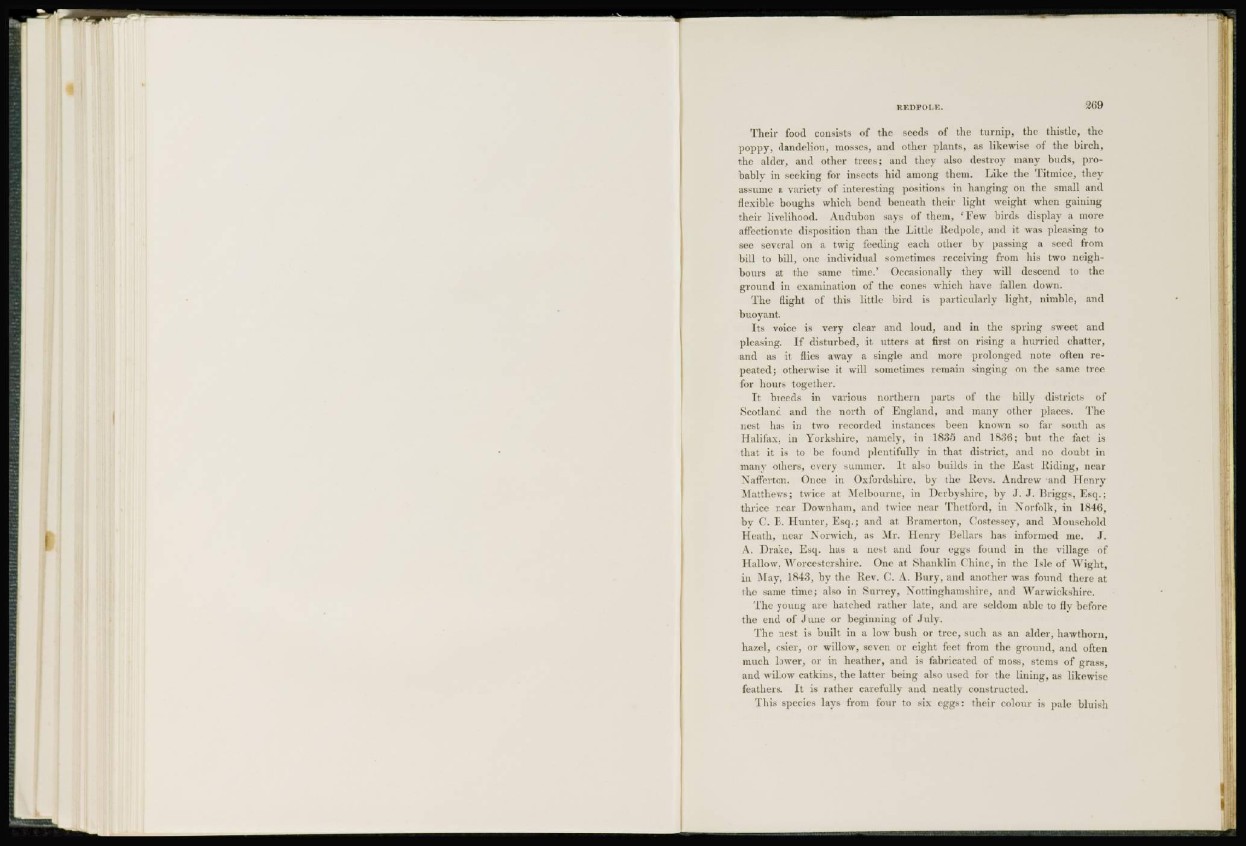
Their food consists of the seeds of the turnip, the thistle, the
poppy, dandelion, mosses, and other plants, as likewise of the birch,
the alder, and other trees; and they also destroy many buds, probably
in seeking for insects hid among them. Like the Titmice, they
assume a variety of interesting positions in hanging on the small and
flexible boughs which bend beneath their light weight when gaining
their livelihood. Audubon says of them, Tew birds display a more
affectionate disposition than the Little Redpolc, and it was pleasing to
see several on a twig feeding each other by passing a seed from
bill to bill, one individual sometimes receiving from his two neighbours
at the same time' Occasionally they will descend to the
ground in examination of the cones which have fallen down.
The flight of this little bird is particularly light, nimble, and
buoyant.
Its voice is very clear and loud, and in the spring sweet and
pleasing. If disturbed, it utters at first on rising a hurried chatter,
and as it flies away a single and more prolonged note often repeated;
otherwise it will sometimes remain singing on the same tree
for hours together.
It breeds in various northern parts of the hilly districts of
Scotland and the north of England, and many other places. The
nest has in two recorded instances been known so far south as
Halifax, in Yorkshire, namely, in 1835 and 1836; but the fact is
that it is to be found plentifully in that district, and no doubt in
many others, every summer. It also builds in the East Riding, near
Nafferton. Once in Oxfordshire, by the Revs. Andrew and Henry
Matthews; twice at Melbourne, in Derbyshire, by J. J. Briggs, Esq.;
thrice near Downham, and twice near Thetford, in Norfolk, in 1846,
by C. B. Hunter, Esq.; and at Bramerton, Oostessey, and Mouschold
Heath, near Norwich, as Mr. Henry Bellars has informed me. J.
A. Drake, Esq. has a nest and four eggs found in the village of
Hallow, Worcestershire. One at Shauklin Chine, in the Isle of Wight,
in May, 1843, by the Rev. C. A. Bury, and another was found there at
the same time; also in Surrey, Nottinghamshire, and Warwickshire.
The young are hatched rather late, and are seldom able to fly before
the end of June or beginning of July.
The nest is built in a low bush or tree, such as an alder, hawthorn,
hazel, osier, or willow, seven or eight feet from the ground, and often
much lower, or in heather, and is fabricated of moss, stems of grass,
and willow catkins, the latter being also used for the lining, as likewise
feathers. It is rather carefully and neatly constructed.
This species lays from four to six eggs: their colour ia pale bluish